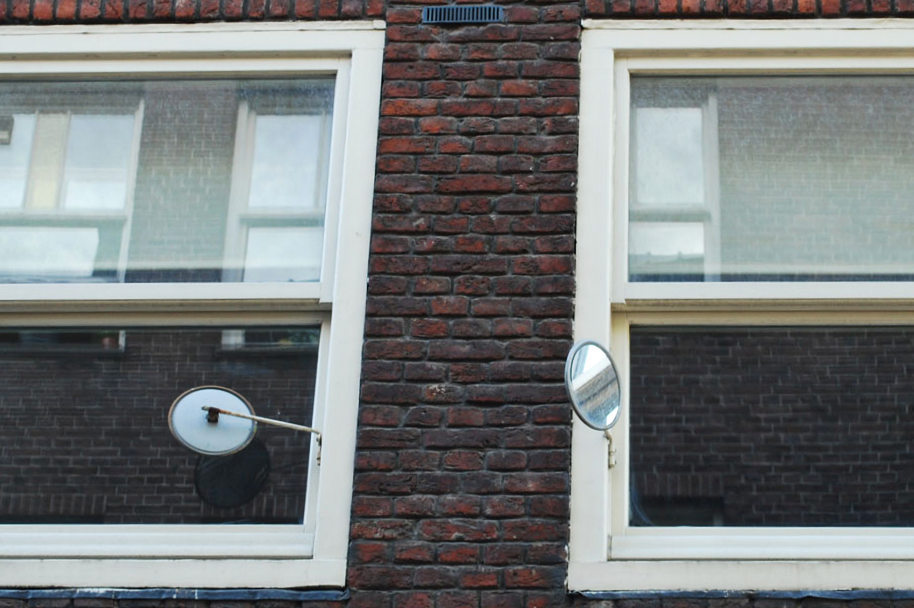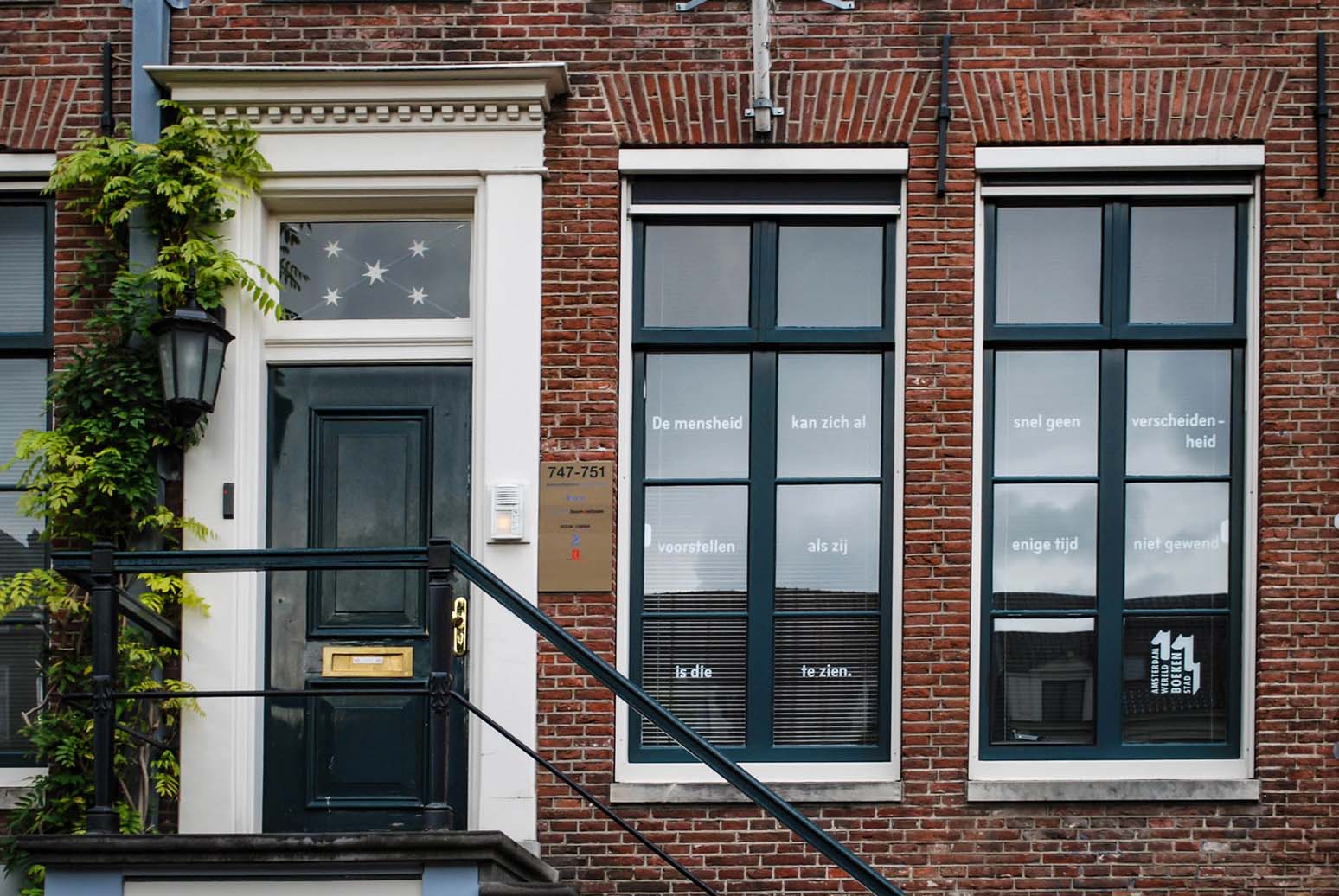I recently read a collection of essays called At Home, the first volume of a series on the evolution of domestic space, published by Syracuse University. TU Delft professor of Architecture Irene Cieraad edited the essays with a devotion to the significance of symbolism within and outside the home. Allow me to illustrate the first chapter, Dutch Windows.
In Dutch Windows, Cieraad explains – without opinion or bias – how female domestication came to be. Once upon a time, the role of a housewife included control guard of the home, sitting by the front door facing the street. Think of Vermeer’s Het Straatje (down below) or a Jacobus Vrel painting (here). The city porches ran along the busy streets of big cities in Amsterdam smaller towns like Delft, and allowed women to keep check around the neighborhood, sustain relationships with the locals, and participate -always within the limits constrained of the times- in modern society. Open windows hid nothing. The phenomenon began some time around the 18th century, and through Cieraad’s use of paintings from the Golden Age we can spot a specific movement, one so clear that it names the chapter: Female Vice and Virtue.
- Stadsgezicht
- Het Straatje
- Man hands a letter to a woman in a hall

Two hundred years later, women stand in front of windows selling sex. In between two centuries, a major shift happened.

The first to retreat were the wives of high society, Cieraad explains, who were told that the streets were too dirty for women of a certain class. Is it a coincidence that the first urinoir was erected in Amsterdam in 1880? So while the men faced the jungle, the wives and daughters tended to the private space indoors. By the following century, laws of decency did not allow women to be out in the street and by now the lower classes had followed inside. Some women missed their position standing guard and attached mirrors to their windows.

Lives were lived in inner gardens and courtyards. The Canal House entrances with stairs created an explicit division between the ladies of the house to life on the street. Purity was the point. Pieter de Hooch began exploiting windows to symbolize modesty, using latches to represent virginity and virtue. Broken or open windows warned of a woman’s integrity.

It also functioned as a visual representation of the family values and virtues, and it should be said that it still does. “Its decoration is a direct but silent statement to the outside world of the woman’s devotion to the home.”

In the book The Power of Habit, Charles Duhigg explores how habits are formed, giving us the example of how much of our modern behavior evolved from the booming 19th-century understanding of germs. It’s an invention, or an innovation, which evolved to … clean living? Clean eating and detoxes? White collar jobs required more frequent rounds of laundry, one that didn’t require fetching water from a well eight to ten times a day. Somewhere within it began to make sense to remove women from the communal laundry centers and bring the entire activity indoors. On came the innovations, and the washing machine was born. (Before and during the 20th century wars, life as a woman was really something else. Modern life is tough, but back then it was true labor. I highly recommend the BBC2 documentary series, Back in Time for the Weekend, where a family visits an entirely new decade every week. Click here to watch episodes.)

The woman’s devotion to the home began to change once the workforce opened up during and after WW2. New resentments began to form among housewives who saw the devaluation of their role simply because they weren’t getting paid for it. Meanwhile, the technological innovations that followed created the biggest opportunities and rapid change, the smartest that were able to enter and explore the market. Since more people express their worry of an impending third World War, I’d like to consider that we may not repeat history if we break open possibilities of how it happened. I don’t know how these women (and the men) were convinced of this, but knowing what we know now, it doesn’t seem like much of a stretch to consider how easy it could have been to convince just by evoking the “good old days” of the Golden Age, don’t you think?
Anyway, it still an act of bravery for women to walk in the street, in case anyone needed reminding.

“Humanity cannot imagine segregation if it isn’t used to seeing it for some time.” – John Stuart Mill



Comments are closed here.